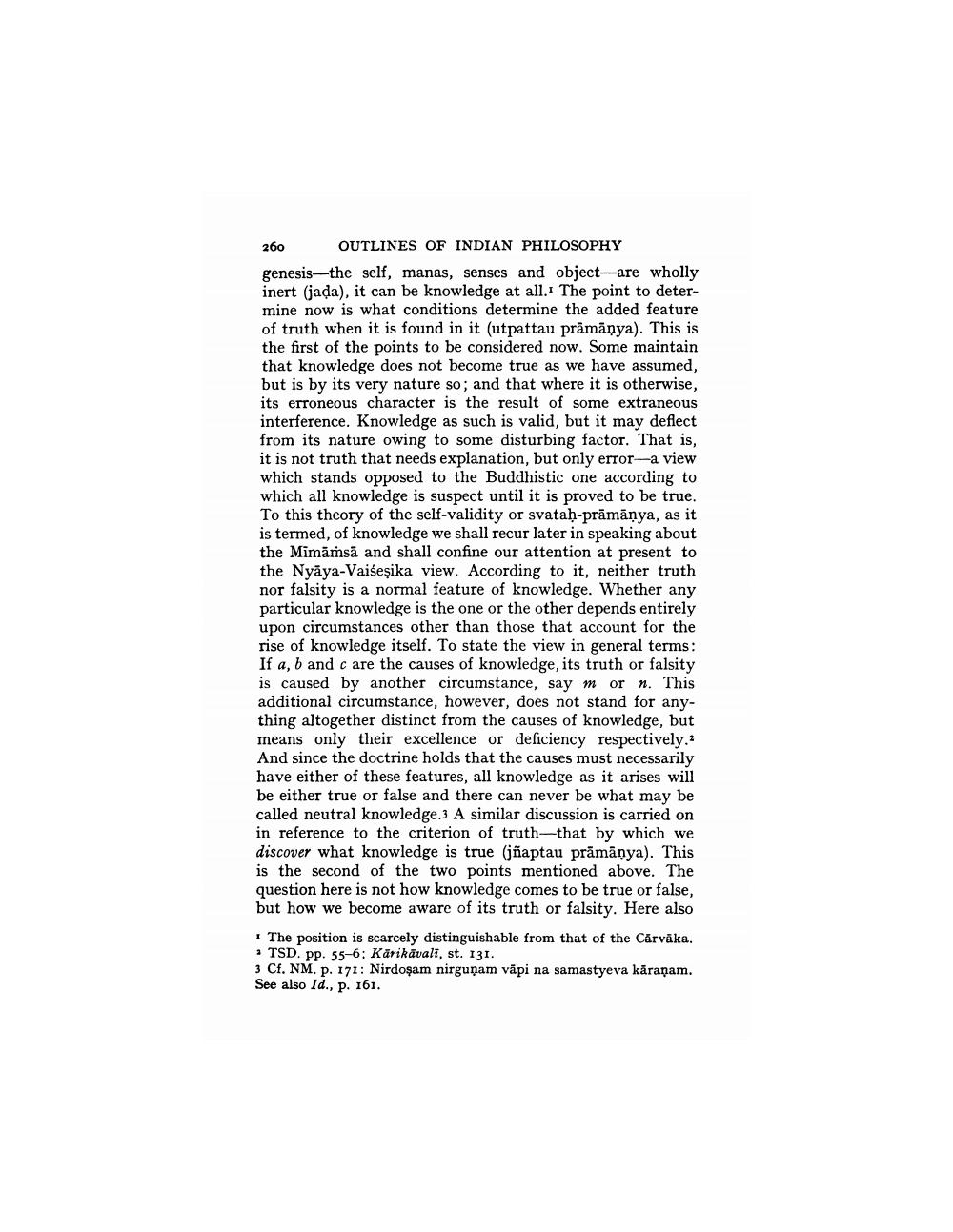________________
260 OUTLINES OF INDIAN PHILOSOPHY genesis-the self, manas, senses and object-are wholly inert (jada), it can be knowledge at all. The point to determine now is what conditions determine the added feature of truth when it is found in it (utpattau prāmānya). This is the first of the points to be considered now. Some maintain that knowledge does not become true as we have assumed, but is by its very nature so; and that where it is otherwise, its erroneous character is the result of some extraneous interference. Knowledge as such is valid, but it may deflect from its nature owing to some disturbing factor. That is, it is not truth that needs explanation, but only error-a view which stands opposed to the Buddhistic one according to which all knowledge is suspect until it is proved to be true. To this theory of the self-validity or svatah-prämānya, as it is termed, of knowledge we shall recur later in speaking about the Mimārsā and shall confine our attention at present to the Nyāya-Vaiseșika view. According to it, neither truth nor falsity is a normal feature of knowledge. Whether any particular knowledge is the one or the other depends entirely upon circumstances other than those that account for the rise of knowledge itself. To state the view in general terms: If a, b and c are the causes of knowledge, its truth or falsity is caused by another circumstance, say m orn. This additional circumstance, however, does not stand for anything altogether distinct from the causes of knowledge, but means only their excellence or deficiency respectively. And since the doctrine holds that the causes must necessarily have either of these features, all knowledge as it arises will be either true or false and there can never be what may be called neutral knowledge.3 A similar discussion is carried on in reference to the criterion of truth-that by which we discover what knowledge is true (jñaptau prāmānya). This is the second of the two points mentioned above. The question here is not how knowledge comes to be true or false, but how we become aware of its truth or falsity. Here also
The position is scarcely distinguishable from that of the Carvāka. · TSD. pp. 55-6; Karikāvali, st. 131. 3 Cf, NM, p. 171: Nirdosam nirguņam vāpi na samastyeva kärañam. See also Id., p. 161.




